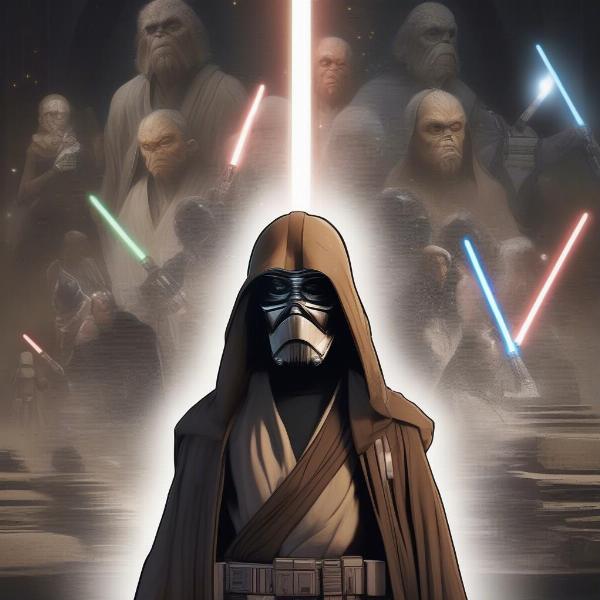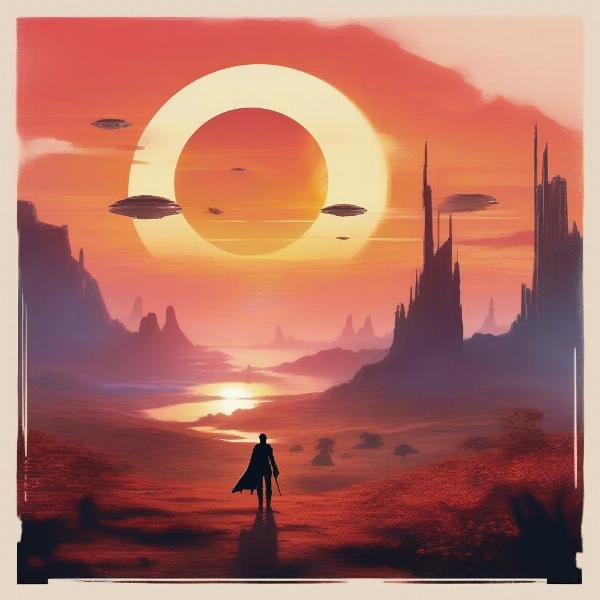The Star Wars franchise, once a beacon of cinematic brilliance and immersive storytelling, has seen its reputation somewhat tarnished, and some might argue that video games play a significant role in this decline. Here at supremeduelist.blog, we delve deep into gaming culture and its impact, and today, we are exploring how various game titles, for better or worse, have influenced the beloved galaxy far, far away.
From controversial design choices to narrative missteps, we’ll investigate how these interactive experiences, often intended to enhance the Star Wars universe, may have instead contributed to its gradual erosion in the eyes of some fans. We will be exploring the highs and lows, as well as some potential paths forward to try and fix the course the franchise is on.
The High Hopes and Crashing Landings of Star Wars Games
The relationship between Star Wars and video games has been long and, frankly, complicated. For every Knights of the Old Republic that sets the bar for RPGs, there’s a Star Wars: Battlefront II launch debacle that leaves a stain on the franchise’s reputation. The potential of interactive storytelling in the Star Wars universe is immense. Imagine being a Jedi, a smuggler, or even an Imperial pilot, shaping your own destiny within the familiar yet ever-expanding galaxy. However, this promise hasn’t always been fulfilled.
 Star Wars video game disappointment with a fallen lightsaber
Star Wars video game disappointment with a fallen lightsaber
One of the primary issues lies in the balancing act between staying true to the source material and innovating within the gaming medium. Often times, developers seem to fall short either in one or the other, which in return leaves the overall feeling of the game lackluster to the community. So the question remains, where are they going wrong?
How Microtransactions and Greed Diminished the Force
The infamous launch of Star Wars Battlefront II is a prime example of how predatory microtransactions can damage a game and, by extension, the Star Wars brand. What should have been a triumphant return to the large-scale warfare of the Galactic Civil War was marred by loot boxes that directly impacted gameplay, essentially creating a pay-to-win system. Players felt cheated and betrayed, not by the Empire, but by the very company entrusted to bring them joy in their beloved Star Wars universe.
This instance of greed cast a long shadow and revealed a vulnerability in the gaming industry, especially for a franchise with such a large and invested fanbase. It wasn’t just about a bad game; it was about a fundamental misunderstanding of the connection fans have with Star Wars. The Force felt less like a mystical energy and more like a bank account with microtransactions being the only way to unlock its true potential.
“The allure of profit margins sometimes overshadows the core experience, leading to design choices that compromise the integrity of the Star Wars universe,” notes Anya Sharma, a game design professor at the University of Coruscant. “It’s crucial that developers understand that the fan base is exceptionally passionate and perceptive.”
Narrative Mismatches: When Games Stray Too Far
Another frequent criticism leveled against Star Wars games is when the narrative strays too far from the established lore. Some games may introduce concepts that clash with the existing continuity or provide inconsistent character portrayals. While the Star Wars Expanded Universe (now Legends) once allowed for a broader range of stories, there’s a strong expectation among many fans to have at least an adherence to the overall themes and feeling of the original trilogy and prequels.
When a game feels like it’s ‘off,’ it doesn’t just disappoint, it breaks the immersion. That feeling of truly being in that world gets eroded, and the game becomes just another hollow action experience that has a Star Wars logo slapped on it. These narrative missteps not only frustrate the fans, but they also diminish the overall strength of the franchise, which can be seen by its more recent media releases.
 Star Wars game lore inconsistency with a conflicted jedi
Star Wars game lore inconsistency with a conflicted jedi
The Problem of Formulaic Gameplay and Repetitive Design
Beyond microtransactions and lore issues, another factor contributing to Star Wars gaming fatigue is the repetitive nature of some game designs. It is apparent that there are many great minds who make Star Wars and gaming experiences who get caught up in this cycle of repetition. Many games fall into the formula of “open-world map, lots of side quests, a bit of repetitive combat, and rinse and repeat.” This is not to say that these games are bad, but it is simply to say that it does grow tiresome after experiencing these formulas for so many releases. While it’s essential to have core gameplay mechanics, a lack of innovation or variety can leave players feeling like they’re going through the motions rather than embarking on an exciting adventure in the galaxy far, far away.
The sense of wonder and discovery that defined early Star Wars games is often missing in these more recent titles. The lack of unique gameplay can lead to a feeling of being in the Star Wars universe, but not experiencing it. This has become an increasingly important aspect of the gaming world and the demand is greater for games that allow a player to feel immersed and engaged.
Are There Any Star Wars Games That Get it Right?
It’s not all doom and gloom in the Star Wars gaming landscape. Games like Star Wars Jedi: Fallen Order and its sequel, Survivor, have shown a path forward by focusing on strong character-driven narratives and tight, engaging gameplay. Star Wars: Squadrons offered a thrilling experience in the cockpit of classic starfighters that was very much desired from the fanbase.
“When a Star Wars game is made with genuine care and respect for the source material, and when it understands what makes the universe so appealing, it can truly shine,” remarks Elias Vance, lead designer at a small indie studio that is working on a Star Wars mod for a popular game. “The focus needs to be on quality over quantity, on experience over profit.”
What Can Be Done to Restore the Force?
The future of Star Wars games depends on developers listening to the fanbase and prioritizing the experience over quick profits. There needs to be a balance between honoring the established lore and exploring new stories that expand the galaxy in meaningful ways. Here are some steps that should be considered:
- Prioritize story and character: Focus on creating compelling narratives and relatable characters that players can connect with.
- Offer diverse gameplay: Don’t rely on the same repetitive formulas. Experiment with unique game mechanics and offer varied experiences.
- Avoid predatory monetization: Microtransactions should be cosmetic and not impact core gameplay.
- Be transparent with the community: Listen to player feedback and be open about development plans.
- Focus on the core of the Star Wars experience: Tap into what makes the Star Wars universe unique, focus on aspects of community and character, and create those immersive experiences.
 Star Wars game future hope with a rising sun over a planet
Star Wars game future hope with a rising sun over a planet
Frequently Asked Questions (FAQ) About Star Wars Games
Q: What are the biggest issues with recent Star Wars games?
A: Predatory microtransactions, inconsistent narratives, and repetitive gameplay designs are some of the most common issues pointed out by fans and critics alike.
Q: Which Star Wars games are considered the best?
A: Knights of the Old Republic, Star Wars Jedi: Fallen Order, and Star Wars: Squadrons are frequently praised for their strong narratives and immersive gameplay.
Q: Why are some Star Wars games considered ‘ruining’ the franchise?
A: When games prioritize profit over quality, contradict established lore, or become just another generic title, it leads to a sense of disappointment and tarnishes the brand.
Q: How can Star Wars games improve in the future?
A: By focusing on strong storytelling, offering unique gameplay, avoiding predatory monetization, and listening to community feedback.
Q: What is the difference between Star Wars Canon and Star Wars Legends?
A: Canon refers to the official story, while Legends encompasses stories previously considered part of the official continuity, but now exist outside of it.
Q: Are there any upcoming Star Wars games to look forward to?
A: Several games are in development, including Star Wars: Outlaws, and many smaller indie games, many fans remain hopeful for these new and exciting entries.
Restoring Balance to the Force
The impact of video games on the Star Wars franchise is a complex one, filled with both highs and lows. While some games have undoubtedly enhanced the galaxy far, far away, others have damaged the brand and tested the patience of the community. However, by focusing on quality, listening to the fans, and prioritizing experience over profit, developers can restore balance to the Force and ensure that the future of Star Wars games is bright.
Here at Supreme Duelist Blog, we remain committed to exploring the impact of video games and the entertainment industry and providing our readers with insightful analysis. It’s time for the developers to take these lessons to heart, avoid the pitfalls of the past, and create games worthy of the Star Wars legacy. Join us next time as we explore the new horizon that is coming to games and what else we can look forward to.
Leave a Reply